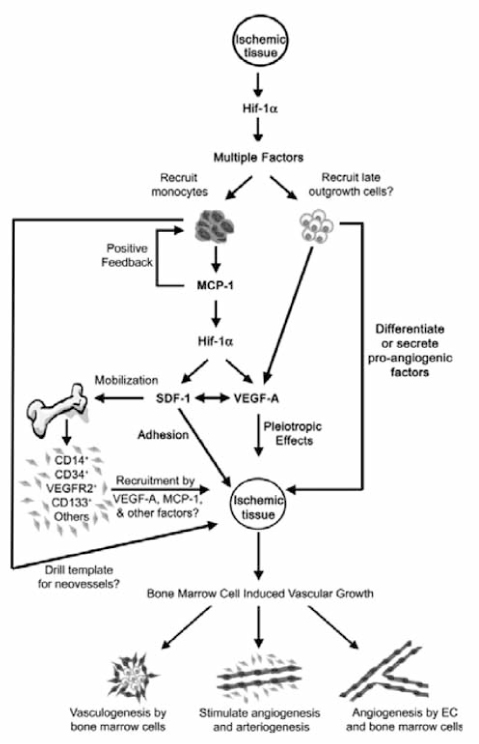Endocrinol Metab.
2010 Sep;25(3):166-170. 10.3803/EnM.2010.25.3.166.
Molecular Biology of Atherosclerosis
- Affiliations
-
- 1Department of Endocrinology & Metabolism, East-West Neo Hospital, Graduate school of Medicine, Kyung Hee University, Seoul, Korea. jik1016@dreamwiz.com
- KMID: 2169051
- DOI: http://doi.org/10.3803/EnM.2010.25.3.166
Abstract
- No abstract available.
MeSH Terms
Figure
Reference
-
1. Ross R. Atherosclerosis--an inflammatory disease. N Engl J Med. 1999. 340:115–126.2. Glass CK, Witztum JL. Atherosclerosis. The road ahead. Cell. 2001. 104:503–516.3. Napoli C, D'Armiento FP, Mancini FP, Postiglione A, Witztum JL, Palumbo G, Palinski W. Fatty streak formation occurs in human fetal aortas and is greatly enhanced by maternal hypercholesterolemia. Intimal accumulation of low density lipoprotein and its oxidation precede monocyte recruitment into early atherosclerotic lesions. J Clin Invest. 1997. 100:2680–2690.4. Williams KJ, Tabas I. Lipoprotein retention--and clues for atheroma regression. Arterioscler Thromb Vasc Biol. 2005. 25:1536–1540.5. Son KP, Chae YJ, Lee TY, Jeong IK, Hur M, Jo GY, Lee Y, Lee SJ, Park CY, Oh KW, Hong EK, Kim HK, Yu JM, Kim DM, Lim SH, Choi MK, Yoo HJ, Park SW. The influence of metabolic syndrome on the intima-medial thickness and cardiovascular risk factors in type 2 diabetes. J Korean Diabetes Assoc. 2004. 28:1–15.6. Shin HW, Jeong IK, Cho GY, Choi CY, Kim JY, Chae YJ, Cho MH, Lee BW, Lee SJ, Park CY, Hong EG, Kim HK, Kim DM, Yu JM, Ihm SH, Choi MK, Yoo HJ, Park SW. The changes in atherosclerotic markers and adiopocytokines after treatment with growth hormone for the patients with hypopituitarism and growth hormone deficiency. J Korean Endocr Soc. 2006. 21:515–525.7. Cybulsky MI, Gimbrone MA Jr. Endothelial expression of a mononuclear leukocyte adhesion molecule during atherogenesis. Science. 1991. 251:788–791.8. Gosling J, Slaymaker S, Gu L, Tseng S, Zlot CH, Young SG, Rollins BJ, Charo IF. MCP-1 deficiency reduces susceptibility to atherosclerosis in mice that overexpress human apolipoprotein B. J Clin Invest. 1999. 103:773–778.9. Qiao JH, Tripathi J, Mishra NK, Cai Y, Tripathi S, Wang XP, Imes S, Fishbein MC, Clinton SK, Libby P, Lusis AJ, Rajavashisth TB. Role of macrophage colony-stimulating factor in atherosclerosis: studies of osteopetrotic mice. Am J Pathol. 1997. 150:1687–1699.10. Silverstein RL, Febbraio M. CD36, a scavenger receptor involved in immunity, metabolism, angiogenesis, and behavior. Sci Signal. 2009. 2:re3.11. Rothblat GH, Phillips MC. High-density lipoprotein heterogeneity and function in reverse cholesterol transport. Curr Opin Lipidol. 2010. 21:229–238.12. Gotsman I, Gupta R, Lichtman AH. The influence of the regulatory T lymphocytes on atherosclerosis. Arterioscler Thromb Vasc Biol. 2007. 27:2493–2495.13. Pinderski LJ, Fischbein MP, Subbanagounder G, Fishbein MC, Kubo N, Cheroutre H, Curtiss LK, Berliner JA, Boisvert WA. Overexpression of interleukin-10 by activated T lymphocytes inhibits atherosclerosis in LDL receptor-deficient Mice by altering lymphocyte and macrophage phenotypes. Circ Res. 2002. 90:1064–1071.14. Libby P, Okamoto Y, Rocha VZ, Folco E. Inflammation in atherosclerosis: transition from theory to practice. Circ J. 2010. 74:213–220.15. Semenza GL. Vasculogenesis, angiogenesis, and arteriogenesis: mechanisms of blood vessel formation and remodeling. J Cell Biochem. 2007. 102:840–847.16. Asahara T, Murohara T, Sullivan A, Silver M, van der Zee R, Li T, Witzenbichler B, Schatteman G, Isner JM. Isolation of putative progenitor endothelial cells for angiogenesis. Science. 1997. 275:964–967.17. Hirschi KK, Ingram DA, Yoder MC. Assessing identity, phenotype, and fate of endothelial progenitor cells. Arterioscler Thromb Vasc Biol. 2008. 28:1584–1595.18. Schatteman GC, Dunnwald M, Jiao C. Biology of bone marrow-derived endothelial cell precursors. Am J Physiol Heart Circ Physiol. 2007. 292:H1–H18.19. Silvestre JS. Vascular progenitor cells and diabetes: role in postischemic neovascularisation. Diabetes Metab. 2008. 34:S33–S36.
- Full Text Links
- Actions
-
Cited
- CITED
-
- Close
- Share
- Similar articles
-
- Molecular Imaging of High-Risk Atherosclerotic Plaques: Is It Clinically Translatable?
- Single Cell RNA-Sequencing for the Study of Atherosclerosis
- Molecular Biology in Prenatal Diagnosis for Inborn Error of Metabolism
- Advances in Understanding the Molecular Biology of Brain Tumors
- Molecular Imaging of Atherosclerosis




